Echeveria Setosa: Grow & Care for Mexican Firecracker
Written by Iris
Nov 22 2021
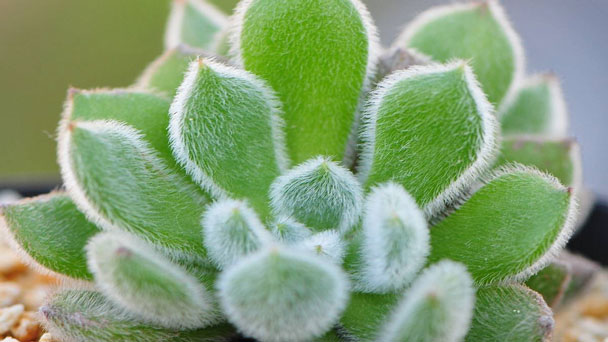
Echeveria Setosa (Mexican Firecracker) is not exactly a hardy succulent, although it thrives in winter as an indoor plant. In summer, Echeveria Setosa (Mexican Firecracker) shape has spoon-shaped pale green leaves and red flowers.Taking care of Echeveria Setosa is not easy. You must know the correct temperature, light, fertilizer, soil, watering and beauty requirements. But fortunately for you, this article covers everything you need to know about growing, caring for, and propagating Echeveria Setosa.
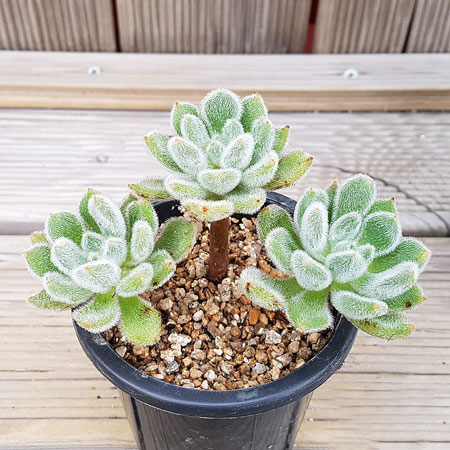
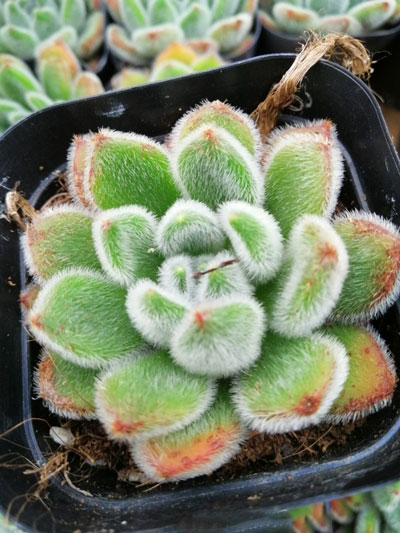
Temperature and Humidity
As suggested by its name, these plants like hot, sunny locations. They are not cold hardy and must be brought indoors if you live in areas with cold winters. Otherwise, they can be planted yearly as annuals. Because these succulents are native to semi-desert areas, low to medium humidity is preferred. Too much moisture can cause rot.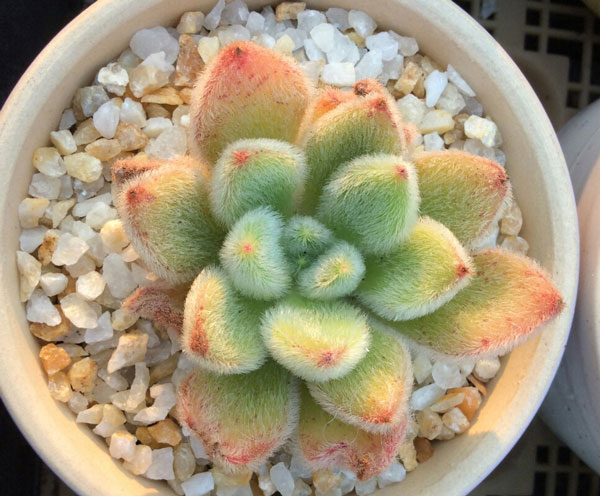
They feed on any organic matter, making your succulents desperately compete for essential nutrients. And when the nutrients in the soil are entirely suppressed by the larvae, the plant’s roots will begin to weaken drastically. That’s often the case especially when your Mexican Firecracker is at its early sprouting stages. You can also use sticky traps to effectively eliminate fungus gnats.
To get rid of mealybugs, you can wipe off the infected areas using cotton swabs dipped in isopropyl alcohol. In the infestation is massive and the natural remedies don’t seem to yield solid results, you can opt for remedies such as insecticidal soaps or neem oil that would help control the numbers.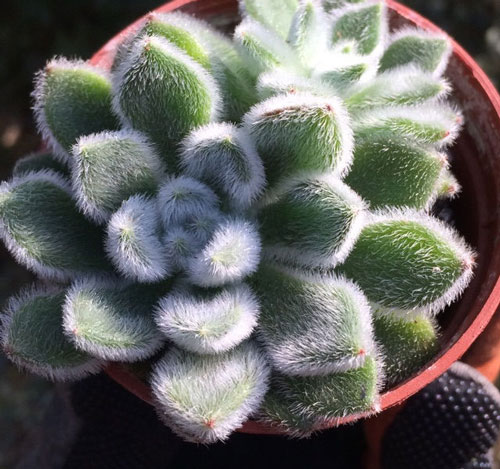
Echeveria setosa var. ciliata.
Echeveria setosa var. deminuta.
Echeveria 'Dondo'
Echeveria 'Doris Taylor'
Echeveria 'Doris Taylor' f. cristata.
Echeveria 'Set-Oliver'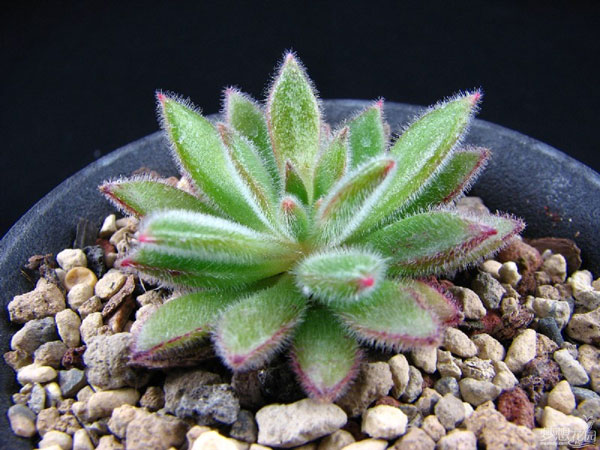
Read Next:
Echeveria Elegans Mexican Snowballs Care & Growing Guide
Echeveria Laui (Echeveria Succulent) Care Guide
Echeveria Agavoides Care & Propagation
Echeveria Pulvinata (Chenille Plant) Care & Propagation Guide
Echeveria Nodulosa (Painted Echeveria) Care Guide
Echeveria Imbricata (Blue Rose Echeveria) Grow & Care Guide
Echeveria Black Prince Succulent Grow & Care Guide
Echeveria Runyonii Topsy Turvy Grow & Care Guide
Echeveria Takasago No Okina Care Guide
Echeveria Mebina Care Guide
Where to Grow Echeveria SetosaHow to Grow Echeveria Setosa (Mexican Firecracker)Echeveria Setosa Propagation with SeedsEcheveria Setosa Propagation with Stem CuttingsEcheveria Setosa Propagation with Leaf CuttingsEcheveria Setosa Propagation with OffsetsHow to Care for Echeveria Setosa (Mexican Firecracker)Echeveria Setosa Care - LightEcheveria Setosa Care - SoilEcheveria Setosa Care - WaterEcheveria Setosa Care - FertilizerEcheveria Setosa Care - PruningEcheveria Setosa Care - Pests & DiseasesVarieties of Echeveria Setosa (Mexican Firecracker)Echeveria Setosa (Mexican Firecracker) FAQCan Echeveria grow indoors?How fast does Echeveria grow?Is Echeveria Setosa a perennial?
Where to Grow Echeveria Setosa
Echeveria Setosa (Mexican Firecracker) is not cold hardy, so if you live in a zone that gets colder than 30° F (-1.1° C), it's best to plant this succulent in a container that can be brought indoors. It does well in full to partial sun, but can also be grown indoors if given enough light.
How to Grow Echeveria Setosa (Mexican Firecracker)
Echeveria Setosa Propagation with Seeds
This succulent type is a slow grower so even if it can be propagated by its seeds, this method is not recommended. To propagate from the seeds, plant the seeds in a well-draining soil mixture. This method can be used outdoors. In cooler areas, indoor propagating is recommended.Echeveria Setosa Propagation with Stem Cuttings
If you are taking a stem cutting of echeveria setosa (Mexican Firecracker), use a sterile knife or sharp scissors and cut a tube from the base of the plant. Allow the cutting to dry for several days before placing in well-draining soil. Wait to water an additional day or two, and then water using the “soak and dry” method.Echeveria Setosa Propagation with Leaf Cuttings
When propagating Echeveria Setosa (Mexican Firecracker) with leaves. You should get a leave carefully from the mother plant. It should be a healthy leave that has no part left on the stem. In this way, the propagation will work. Before replanting, wait for a few days to allow it to callous. Use well-draining soil for your new succulent plant. Don’t forget to water when the soil dries out.Echeveria Setosa Propagation with Offsets
Mexican Firecracker propagates from offsets. To be able to propagate from the mother plant, you might wait several years for the main plant to produce an offset. To start this process, use a sharp knife and remove an offset from the main plant. When you remove the offset, clean the extra soil from it. Before replanting, wait for a few days to allow it to callous. Use well-draining soil for your new succulent plant. Don't forget to water when the soil dries out. (Find More Prayer Plant Varieties Here.)
How to Care for Echeveria Setosa (Mexican Firecracker)
Echeveria Setosa Care - Light
Some echeveria species do well under full sun and some need protection from intense afternoon sun. Most need at least 4-6 hours of bright light, or more. More fragile echeverias or baby plants cannot handle intense, full sun and need filtered but bright light to prevent sun damage. Generally, smaller plants cannot handle intense heat or sun, especially newly propagated plants and bigger ones can take more intense sunlight . Even still, hardy plants that have been acclimated to full sun can still burn during intense heat or heat waves. Most plants need to be acclimated to the sun’s rays when you plan to increase sunlight.Echeveria Setosa Care - Soil
The best soil for the firecracker plant is a well-draining soil or cactus mix with low acidity. Make your own soil by combining potting mix and perlite in a 1:1 proportion. Check if the texture of the soil is good by squeezing a small portion in your hand. As you open your hand, the soil should fall apart freely if you mixed it well. If the soil forms a mold, it means perlite quantity is not enough. The drainage of the soil can be improved by use of coarse sand instead of fine sand.Echeveria Setosa Care - Water
Excess water is its main weakness. That is why it is necessary to have good irrigation habits. To do this, take into account the temperature you are in. In winter times, for example, minimize the frequency of watering, only do it when the substrate is completely dry. In summer and spring, try to water once a week.Temperature and Humidity
As suggested by its name, these plants like hot, sunny locations. They are not cold hardy and must be brought indoors if you live in areas with cold winters. Otherwise, they can be planted yearly as annuals. Because these succulents are native to semi-desert areas, low to medium humidity is preferred. Too much moisture can cause rot.
Echeveria Setosa Care - Fertilizer
These are desert plants, with a native soil not filled with nutrients. For this reason, this plant may be very subject to fertilizer burn. Early in the growing season, give your plant a treat of a slow release fertilizer. Throughout the growing season provide a very diluted mixture of water-soluble fertilizer. It is best to use a cactus fertilizer which has a lower nitrogen content.Echeveria Setosa Care - Pruning
The echeveria does not need to be pruned; it will only require that you remove those parts that are in poor condition.
Echeveria Setosa Care - Pests & Diseases
- Pests
They feed on any organic matter, making your succulents desperately compete for essential nutrients. And when the nutrients in the soil are entirely suppressed by the larvae, the plant’s roots will begin to weaken drastically. That’s often the case especially when your Mexican Firecracker is at its early sprouting stages. You can also use sticky traps to effectively eliminate fungus gnats.
To get rid of mealybugs, you can wipe off the infected areas using cotton swabs dipped in isopropyl alcohol. In the infestation is massive and the natural remedies don’t seem to yield solid results, you can opt for remedies such as insecticidal soaps or neem oil that would help control the numbers.
- Diseases

Varieties of Echeveria Setosa (Mexican Firecracker)
Varieties, Forms, and Hybrids of Echeveria setosaEcheveria setosa var. ciliata.
Echeveria setosa var. deminuta.
Echeveria 'Dondo'
Echeveria 'Doris Taylor'
Echeveria 'Doris Taylor' f. cristata.
Echeveria 'Set-Oliver'

Echeveria Setosa (Mexican Firecracker) FAQ
Can Echeveria grow indoors?
Echeveria Setosa (Mexican Firecracker) cannot be grown indoors for long periods of time in most circumstances and prefer to be outdoors in lots of light. However, they have been known to survive in sun-rooms, conservatories and rooms that receive all day sunlight. Echeveria is a large genus of flowering plants that are native to Central America.How fast does Echeveria grow?
Fast-growing plants like Echeveria Setosa (Mexican Firecracker), however, can grow from 2 inches to 6 to 8 inches in just one year. The growth rate also depends on the type of propagation. Growing it from stem will take around 4 weeks or more before it starts to root.Is Echeveria Setosa a perennial?
These perennial plants are tiny, rarely growing more than a few inches tall and slowly expanding across the soil to form small patchesRead Next:
Echeveria Elegans Mexican Snowballs Care & Growing Guide
Echeveria Laui (Echeveria Succulent) Care Guide
Echeveria Agavoides Care & Propagation
Echeveria Pulvinata (Chenille Plant) Care & Propagation Guide
Echeveria Nodulosa (Painted Echeveria) Care Guide
Echeveria Imbricata (Blue Rose Echeveria) Grow & Care Guide
Echeveria Black Prince Succulent Grow & Care Guide
Echeveria Runyonii Topsy Turvy Grow & Care Guide
Echeveria Takasago No Okina Care Guide
Echeveria Mebina Care Guide
Latest Updated
- Benefits of Bugleweed - 7 Science-backed Health Benefits
- Bugleweed Dangers & Side Effects - Is It Poisonous?
- How to Plant Evergreen Trees - What You Should Know
- When to Plant Evergreens - Grow Guide for Evergreen Trees
- 12 Wonderful Evergreen Shrubs for Your Garden
- 12 Popular Evergreen Plants with Pictures for Beginners
- When And How To Prune A Lilac Bush Like a Pro
- How to Grow & Care for Lilac Vine (Hardenbergia Violacea)
- Japanese Lilac Tree (Syringa Reticulata) Care & Propagation Guide
- Shumard Oak Pros and Cons - What to Know
Popular Articles
- Winter maintenance of Antirrhinum Majus
- How to Grow Terminalia Mantaly Tree
- How to Grow and Care for Crossostephium Chinense
- How to grow Antirrhinum Majus in spring
- Peristeria Elata (Dove Orchid) Profile: Info & Care Guide
- Underwatered Snake Plant (Sansevieria Trifasciata) - Signs And How To Fix
- How to Care for Brazilian Jasmine Plant (Mandevilla Sanderi)
- How to Grow & Care for Graptopetalum Purple Delight in Summer
- Rosa Chinensis (China Rose): Plant Growing & Care Tips
- How to Care for Baby Sun Rose (Aptenia Cordifolia)